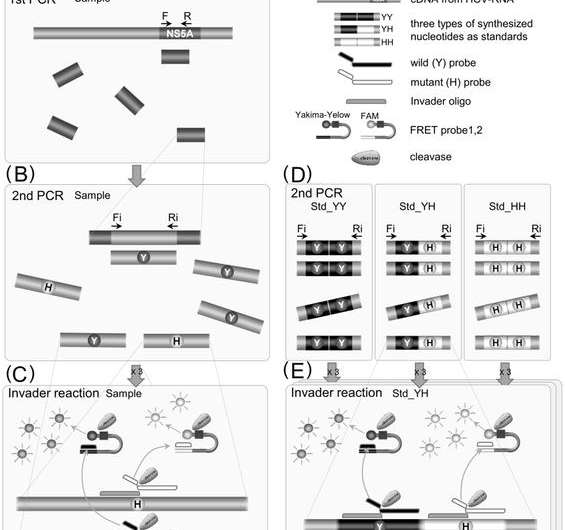The new detection method for a key drug resistant hepatitis C virus mutation

A rapid, sensitive, and accurate method to detect drug resistant hepatitis C virus (HCV) mutants has been developed. Researchers at Hiroshima University established a system to rapidly and accurately measure the presence of HCV Y93H drug resistant mutant strains, and evaluate the proportion of patients harboring this mutation prior to treatment. Even in serum samples with low HCV titers, Y93H drug resistant mutation could be successfully detected in more than half of the samples. This new system for detecting mutant strains may provide important pre-treatment information valuable not only for treatment decisions but also for prediction of disease progression in HCV genotype 1b patients.
HCV is a major cause of chronic liver disease, liver cirrhosis, and hepatocellular carcinoma, affecting up to 180 million people worldwide. HCV often acquires resistance against direct acting antiviral agents. Presence of the Y93H mutation prior to treatment has been reported as an important predictor of virologic failure. Direct sequencing is a commonly used method to detect this mutation. However, it is only capable of detecting viral subpopulations with frequencies of at least 10% to 20%. Next generation sequencing has recently been applied as a more sensitive method to analyze viral mutations, but it is still complex to perform and expensive for widespread clinical use.
By combining nested PCR and the Invader assay with well-designed primers and probes, the Y93H drug resistant mutation can be detected with a high success rate of 98.9% among a total of 702 Japanese HCV genotype 1b patients.
"Our assay system also showed a much lower detection limit for Y93H than using direct sequencing, and Y93H frequencies obtained by this method correlated well with those of deep-sequencing analysis." Professor Kazuaki Chayama, the principle investigator of this study at Hiroshima University, explained.
The proportion of the patients with the Y93H mutant strain estimated by this system was 23.6%, and this rate is comparable with that assayed by real-time PCR and ranked between those of deep sequencing and direct sequencing reported in the Japanese population, presumably reflecting the lower detection limit of Y93H.
This new system attained a high assay success rate and was more sensitive in detecting Y93H than direct sequencing. The evaluation of Y93H strain may provide important information for prediction of disease progression in HCV genotype 1b patients.
More information: "Rapid, Sensitive, and Accurate Evaluation of Drug Resistant Mutant (NS5A-Y93H) Strain Frequency in Genotype 1b HCV by Invader Assay." DOI: 10.1371/journal.pone.0130022















